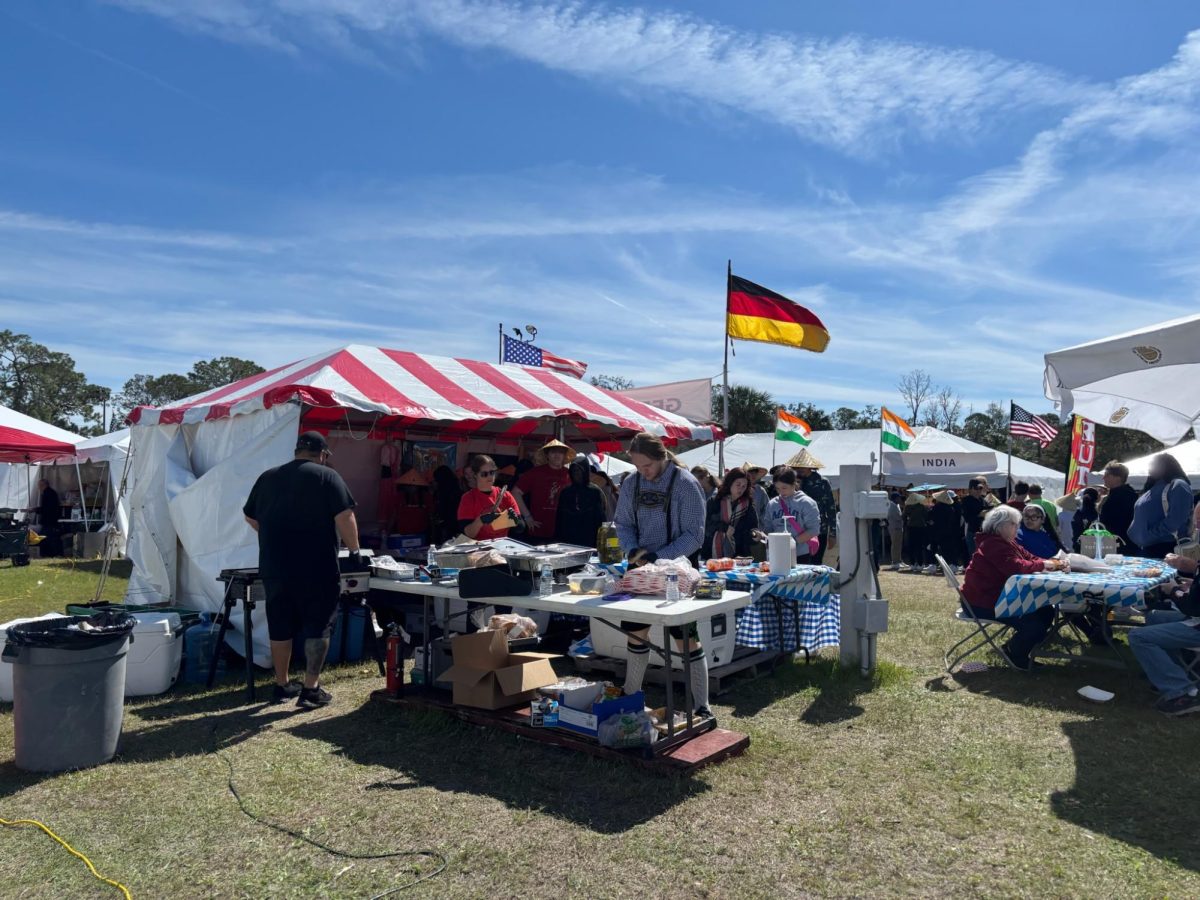ST. PETERSBURG – James Oliver, Jr., grew up around baseball.
His father, James Oliver, Sr., was a baseball player. James Oliver, Jr., started playing the game at seven years old and it became a huge part of his childhood growing up in the historic Gas Plant neighborhood.
He saw the evolution of the stadium – which took over Gas Plant – and watched the neighborhood transform.
Oliver shared his story Wednesday with dozens of Pinellas students at Campbell Park.
The gathering was part of the Journeys in Journalism Gas Plant Reporting Project and involved teachers and volunteers.
The name Gas Plant comes from the two large cylinders or wheels that stored natural gas, said Gary Mormino, a retired University of South Florida professor.
Gas Plant was a neighborhood where African American residents lived and worked, he said.
George Smith, the economic development officer responsible for overseeing the south St. Petersburg community redevelopment area (CRA), also talked with students. The CRA covers parts of the Gas Plant district including John Hopkins Middle School.

The cost of the new Tampa Bay Rays stadium is yet to be determined, Mr. Smith said.
“The initial estimate is that it would be at least a $6 billion development,” he said.
That estimate would include all the housing and businesses around the stadium and the redevelopment of the field, he said.
Mr. Smith mentioned that there could be many problems that may affect the cost, such as the cost of labor and materials. Both have increased since the pandemic, he said.
“So, because of that the cost in development will also increase,” he said.
Money to pay for this will come from three areas: the taxpayers, the developers, and some money will be borrowed.
As part of the reporting project, students also visited the Dr. Carter G. Woodson African American Museum of Florida.
There, students heard lectures from community speakers Gwendolyn Reese, president of the African American Heritage Association, and Jacqueline Hubbard, an attorney.
Jacqueline Hubbard, an attorney, was an eighth grader when she and her family moved to Methodist Town, near the Gas Plant district. When they moved her father couldn’t believe people were living in that rea because of the chemicals from the gas plants were so dangerous. tree or red sky.
Ms. Reese was a resident of Gas Plant, where all the Black people lived together separated from white neighborhoods.
Ms. Reese said she lived in an apartment next to two very wealthy and successful Bblalack men.
“It was the first example of a mixed income neighborhood,” she said.
In Gas Plant, Black people were treated with respect because they were all equal. And the children growing up there had good role models, she said.
When the building of the Rays stadium came, residents were paid to move out of their homes, but it wasn’t enough money, especially for renters.
One man ended up homeless, she said.
About the Gas Plant Reporting Project
The Gas Plant Reporting Project is focuses on the redevelopment of a historically
Black neighborhood of 500-plus homes called The Gas Plant area, razed in the 1980s for the Major League Baseball team now known as the Tampa Bay Rays. The space is being reimagined as a $1.3 billion mixed-used project that includes retails shops, residential units, civic outlets.
The project is comprised of news stories, a podcast series, and a documentary produced by student journalists from the Journeys in Journalism program at Melrose Elementary, John Hopkins Middle, and Lakewood High schools. Support for the project is made possible by a 2023 Broadcasting Hope Media Grant from The Florida Humanities Council.













